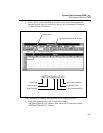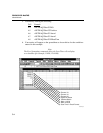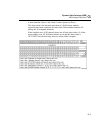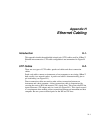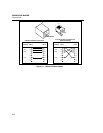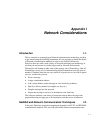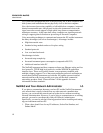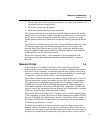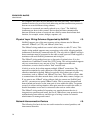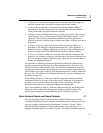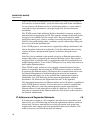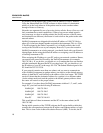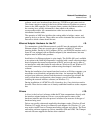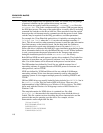
Network Considerations
Network Primer
I
I-3
2. Does the network contain more than one subnet? If so, what’s the IP address of
my default gateway or router device?
3. Will all the routers route IP packets?
4. What are my domain and host names (optional)?
The minimum information you need to get is the IP Addresses for the PC and the
instruments. If your network contains more than one subnet and you want to place
the PC and one or more instruments in different subnets, you must also set the
default gateway address and subnet mask on both the NetDAQ instrument and the
PC.
Your Network Administrator may also need to know the Ethernet addresses of the
PC Ethernet adapter and each NetDAQ instrument that you will attach to the
network. Obtain the Ethernet address of the PC by running the hardware setup
program supplied with the adapter hardware. Obtain the address of the NetDAQ
instruments by using the front panel controls.
Please read “Network Primer” in this appendix for more information on IP
addressing and the other information needed to operate NetDAQ on a general
network.
Network Primer I-4.
In the early days of computer networking, vendors used many proprietary
communication schemes. These forced users to purchase equipment and software
from one or a few companies. As networking became more popular, users placed
pressure on vendors to establish standards to allow interoperation of various types
of computers, operating system software, and interface hardware.
One of these standardization efforts was started by the DARPA agency of the U.S.
Defense department. Another was headed up by the DEC and Xerox companies.
This effort resulted in the Ethernet wiring and low-level protocol scheme. The
DARPA effort resulted in the TCP/IP high-level protocols. Ethernet became an
international standard by the efforts of the IEEE-802.3 committee. TCP/IP is the
protocol used on the international Internet Network and is supported by consensus
of the users of that network (many thousands of hosts).
The Sockets API was developed at U.C. Berkeley and was widely adopted by the
UNIX community to support direct Host-to-Host communication within a TCP/IP
network. WINSOCK is an MS Windows Dynamic Link Library (DLL) version of
the original UNIX Sockets library and has been standardized by a large number of
PC Software and Hardware Vendors.
To reduce the complexity of network schemes and to encourage interoperation
between varieties of networks, the protocols are built up of several layers that are
isolated from each other by well-described interfaces. Usually, the lowest layers of
the protocol are implemented in hardware logic on the interface circuits used by



